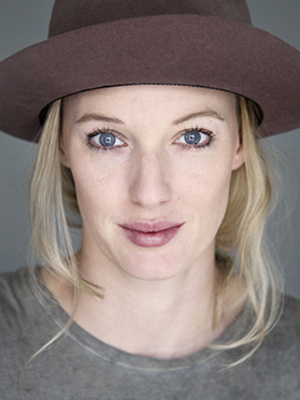Calista Lyon
Contributor
MFA Candidate, Department of Art
The Ohio State University
Biography
Calista Lyon (b. Nagambie, Australia) is a researcher and visual artist living and working in Columbus, Ohio. Through the mediums of photography, video, ceramics and performance she engages questions about our natureculture narratives and their ecological, scientific and political entanglements. Drawing from diverse practices, Lyon is interested in revealing the connections between bodies, histories, knowledge and knowing, reimagining forms of storying that might serve non-human and human worlds in our contemporary moment of ecological crises. In 2017, Lyon presented a solo exhibition at the Murray Art Museum Albury, Australia. She has participated in group shows at DAAP Galleries, University of Cincinnati (2018); Cultural Arts Center, Columbus (2018); Angela Meleca Gallery, Columbus (2018); Beeghly Library, Ohio Wesleyan University, Delaware (2018); Fine Arts Gallery, California State University, Los Angeles (2017) and The Luckman Gallery, Los Angeles (2015) among others. Lyon will present a solo exhibition at ROY G BIV Gallery in Columbus, Ohio in 2019. In 2018, she received The Ohio State University Board of Trustees Student Recognition Award where she is currently undertaking her MFA.
Q & A
What makes more livable futures for you?
A speculative livable future includes a way to counter the failure of dominant national and international political institutions to meet the situation of ecological crises.
What are you reading, viewing, listening to right now?
I’m re-reading The Mushroom at the End of the World: On the Possibility of Life in Capitalist Ruins by Anna Lowenhaupt Tsing because it is rich in humus and needs further unpacking. I’m reading a new book by OSU’s own, Juno Salazar Parreñas Decolonizing Extinction: The Work of Care in Orangutan Rehabilitation. I have just finished reading Dark Emu: Aboriginal Australia and the birth of agriculture by Bruce Pascoe a book urgently needed as a mainstream read in Australian education and culture at large. In the past weeks I have finished Arts of Living on a Damaged Planet: Ghosts and Monsters of the Anthropocene edited by Anna Lowenhaupt Tsing, Heather Anne Swanson, Elaine Gan, and Nils Bubandt a wonderful example of collaborative thinking and doing. I was deeply moved by Christina Sharpe’s connections between history and metaphor in In the wake: on Blackness and Being.
What practices are sustaining you?
Recently—as I am in the midst of my thesis exhibition for my MFA—I have not found a lot of time for sustaining practices, however, I regularly listen to On Being while I am making with my hands. In many ways the conversations in On Being offer spiritual growth in ways I had not felt so consistently while in an indoor space. I grew up on a farm in Australia and I miss this country a great deal, so getting out camping as much as I can is deeply sustaining and something I’m really looking forward to making more time for in the coming year! I lived in California before coming to Ohio and the light and space of the southern deserts left a deep impression on me.

